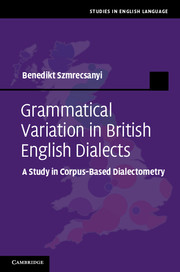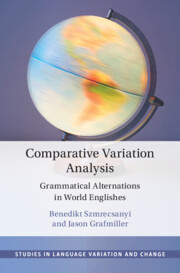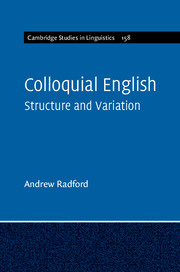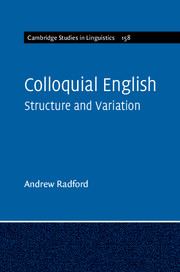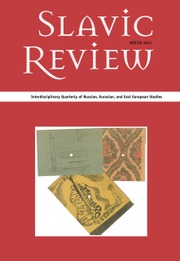Grammatical Variation in British English Dialects
Variation within the English language is a vast research area, of which dialectology, the study of geographic variation, is a significant part. This book explores grammatical differences between British English dialects, drawing on authentic speech data collected in over thirty counties. In doing so it presents a new approach known as 'corpus-based dialectometry', which focuses on the joint quantitative measurement of dozens of grammatical features to gauge regional differences. These features include, for example, multiple negation (e.g. don't you make no damn mistake), non-standard verbal-s (e.g. so I says, What have you to do?), or non-standard weak past tense and past participle forms (e.g. they knowed all about these things). Utilizing state-of-the-art dialectometrical analysis and visualization techniques, the book is original both in terms of its fundamental research question ('What are the large-scale patterns of grammatical variability in British English dialects?') and in terms of its methodology.
- Presents a new methodology known as 'corpus-based dialectometry' to measure grammatical relations between dialects
- Focuses on grammatical variability in dialects and will therefore appeal to those who wish to go beyond the almost exclusive focus on accent variability in previous work
- Includes over thirty straightforward and easily interpretable colour dialect maps
Product details
October 2012Hardback
9781107003453
227 pages
234 × 155 × 15 mm
0.49kg
38 b/w illus. 4 colour illus. 68 maps 22 tables
Temporarily unavailable - available from TBC
Table of Contents
- 1. Introduction
- 2. Data and methods
- 3. The feature catalogue
- 4. Surveying the forest
- 5. Is morphosyntactic variability gradient? Exploring dialect continua
- 6. Classification: the dialect area scenario
- 7. Back to the features
- 8. Summary and discussion
- 9. Outlook and concluding remarks.

